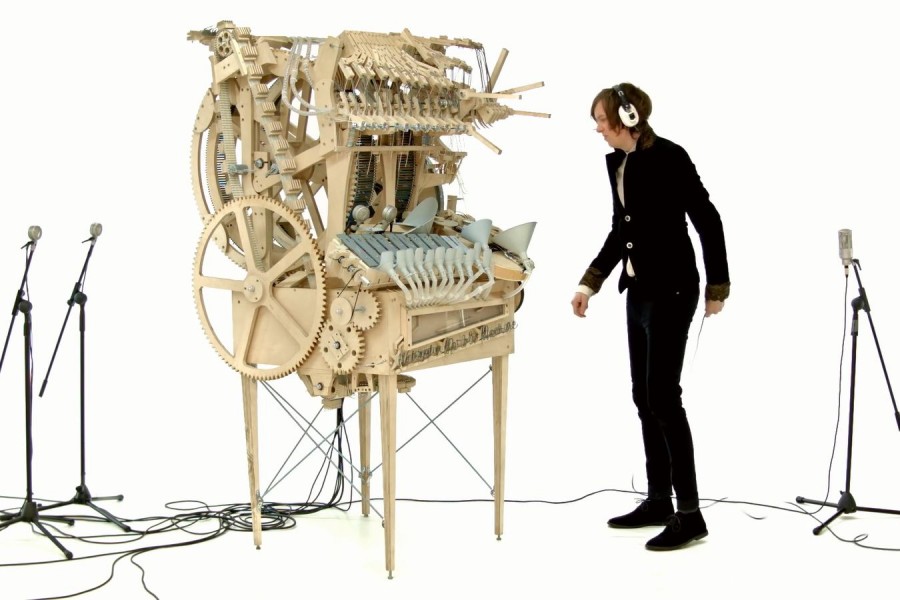Visualization of music in the XXI century: from Animusic to the music box

The Swedish inventor musician created an engineering work of art, a jukebox orchestra, similar to the Pipe Dream scene from Animusic visualization.
Everyone saw computer musical visualizations - flying geometric shapes in music players or dancing three-dimensional female vocaloids . Such visualizations react only to the intensity of sound frequencies and weakly reveal the essence of the playing music.
Visualizers from Animusic (in Russian: live music) in the early 2000s did differently - they drew for each of the melody expressive "mechanical pianos", three-dimensional scenes where mechanical fingers play on the schematic instruments and linked the movements of the scene with reproduction MIDI file containing the melody for these instruments.
')
For reference, the MIDI format is an alternative to recording music as a sequence of sound waves, which became widespread at the end of the 19th century with the invention of the phonograph, then gramophone / gramophone, tape recorder and is still the most used (modern computer formats WAW, MP3, OGG, etc.) n. is advanced analog records). In contrast, MIDI is, in fact, a computer file with a note record of a melody for each of the instruments, an analogue of a drum in a music box or punched tape in a mechanical piano. It is clear that it is easier to extract the behavior of a scene from a musical notation than from a recording of undifferentiated sound waves. However, in this way it is problematic to record a voice (although the same aforementioned vocaloids just constitute a similar attempt).
The most memorable scene from the Animyuzik animation was the scene “The pipe dream” (Pipe Dream; here the pun: after all, the pipe is also the pipe from which the scene is built). It was the only scene that entered the first (2001), and the second (2005) compilation of the Animyuzik videos:
Swedish musician and inventor Martin Mulin, the leader of the “Milky Way” group (Wintergatan), impressed by old-time jukeboxes and clearly influenced by visualizations. Animyuzik created a jukebox-marble machine. Built for 14 months (the process of construction is filmed on video ), the machine orchestra consists of a vibraphone, drum, metallophone, bass guitar, cymbal, contains about 3 thousand wooden parts and 2 thousand metal balls. The result was a functional kinetic sculpture, worthy of a response to virtuality:
The passion for music boxes is not spontaneous - several compositions created by Martin in 2013 of the “Milky Way” group are built around a small music box, controlled by a punched tape. The group itself combines elements of folk and electronic music in their compositions. I recommend listening to their concert - personally I really liked it.
I must say, this is not the first attempt to embody Animyuzik visualization “in the gland”. In 2011, 2 engineers-robotics for 3 months made a robotic replica of the same scene "The impossible dream" for the exhibition of the company Intel (as an advertisement for Intel Atom processors):
The replica, by the way, is fairly honest. The sound of the tool is played only if the sensor on the plastic petal feels the blow from the paintball.
However, the creation of Martin Mulina wins the robotic orchestra in a number of parameters. Not trying to literally reproduce the scene and use pneumatics, the Mulina jukebox contains real musical instruments and honestly collects and reloads the balls. And most importantly - it is a fully mechanical machine.
Source: https://habr.com/ru/post/391413/
All Articles